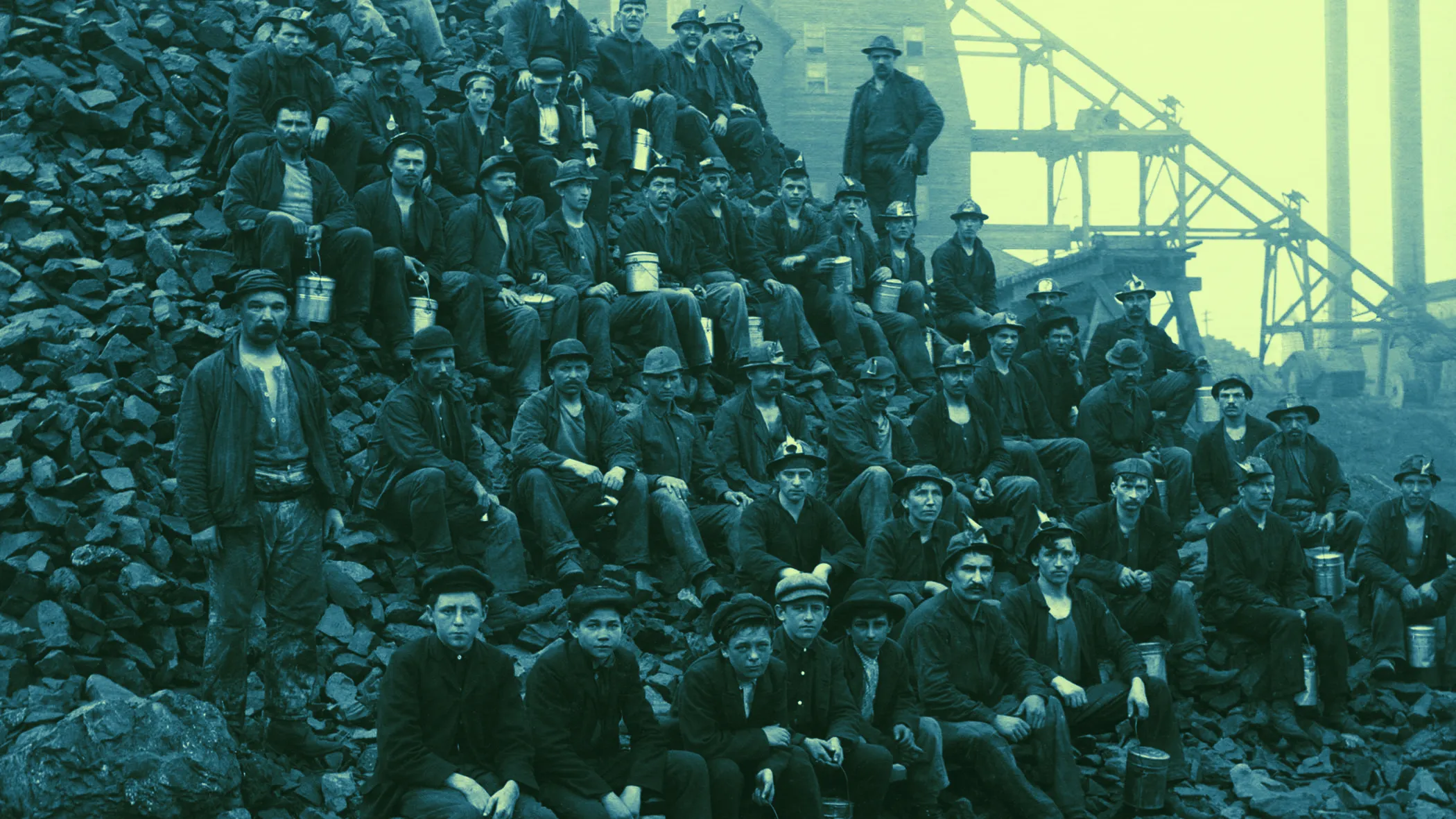We do the research, you get the alpha!
Events move fast in cryptocurrency mining—new prospects open up every day, while others bite the dust.
Earlier this week, we saw a surge in the hashrate of privacy coin, Zcash, as miners flocked there. The week before, Bitcoin SV was delisted from major exchanges, and Mithril became the first coin to launch on the new Binance chain (and saw its value dive, as predicated.)
There are many variables that can influence profitability for miners (and investors too, of course.) With the advice of a number of mining experts, this guide attempts to examine some of the fundamental issues miners need to contend with, and highlight some of the more lucrative cryptocurrencies to mine now.
This is the first of three Decrypt Guides to Mining. Stay tuned for the next two installments, which will provide deeper dives on mining technology, and the strategic choices miners need to make.
Primary considerations—it’s all about liquidity
A smorgasbord of factors determine whether your mining operation will be profitable or not.
“Most profit in smaller operations is spec mining (short for speculative mining) on a network that has a low difficulty,” says the anonymous crypto mining influencer who goes by the nom de tube BitsBeTrippin. He has been running a GPU mining farm since 2013, and now advises legions of miners via his YouTube channel and blogs, on channels such as Steemit.
He explains that this combo of short bursts of mining on carefully judged coins with low difficulty brings in “the most 'token/coin' output for your available hashpower” and is the best bet for converting gains to a larger, more liquid currency, such as Bitcoin, Ethereum or Monero.
Liquidity—the degree to which your assets can be quickly bought or sold, usually on an exchange—is a primary consideration. “Profitability is not as linear as respective hashpower vs cost vs net profitability.” Being able to access one’s earnings—by converting them to another currency, or fiat, on an exchange—is one of the first things experienced miners look for.
The perils of being illiquid are hard-earned coins left sitting on a rig. That’s why proof-of-work (PoW) based blockchains that are listed on major exchanges are popular.
Ravencoin has rekindled some of the joy of mining because even a PC Gamer can earn a return mining Ravencoin
—Pete Hill, Cudo Miner.
“[With] almost all blockchains that are minable and active on one of the many popular exchanges, the risk is relatively low on an issue like moving currency to an exchange, or something not working,” says BitsBeTrippin.
“Even new coins are forks of existing code,” which inspires confidence and demonstrates a history of reliable transactions and verifications, he adds.
But he also warns that there can be limited or no development on some large PoW networks and “continuous updates, [which] can sometimes split the community, causing a hard-fork, killing value.”
Secondary considerations
Some other things miners consider when choosing a cryptocurrency to mine:
- mining difficulty, now and over time
- recent price fluctuations
- price predictions
- market capitalization
- number of use cases
- developers’ background
- social media presence
Yup—that’s a lot. And before jumping in, there are still more questions to ask: What are the chances of your equipment earning coins? Would it be smarter to go it alone, or throw your computing power into a “mining pool” that returns a dividend? And should you go all in on one coin or diversify your bets?
There are things that are unknowable, from the outset, of course. But happily there are plenty of things you can prepare for, too,
Spotting new opportunities.
Now that we’ve addressed some of the more general things the educated miner needs to keep in mind before he or she stakes a claim, let’s get to the fun part, namely, where to mine.
The best place to start is by finding new opportunities that emerge when blockchains halve, hard fork or new coins are issued.
Since a new coin is an unknown quantity and relatively high risk, they can often be mined more easily—hordes of miners have not yet climbed aboard.
For instance, Pete Hill, partnerships director at Cudo Miner, which specializes in software for CPU and GPU rigs, highlights two relatively new coins worth watching.
Launched at the beginning of 2018, GPU-friendly Ravencoin is built on a fork of the Bitcoin code and is designed to handle asset transfers on Bitcoin and Ethereum.
“Ravencoin has rekindled some of the joy of mining because even a PC Gamer can earn a return mining Ravencoin,” says Hill. “It doesn’t take long to earn a whole coin, whereas a small GPU rig would mine for an entire week for only a fraction of a Bitcoin.”
He notes that analytics provider Messari revealed that 118 cryptos increased more in price on a year-to-date basis than Bitcoin—and Ravencoin surpassed all other medium-cap cryptos, with a 386 per cent increase in Q1. ““It’s one of the most profitable crypto altcoins to mine recently. At present, approximately 50 percent of our users are mining it on a daily basis,” he adds.
(Of course, whether the coin is really worth it in the long run, is debatable.)
Another coin miners are watching closely is privacy-focused Grin, launched in January 2019. It has an algorithm that advantages GPU miners.
“For GPU miners, profitability changes daily, so it’s worth keeping an eye on surges in the Mimblewimble coin Grin and Beam, as well as on upcoming “hard fork” events affecting Monero,” says Hill.
An upcoming hard fork for ZCash is also keenly anticipated.
Hill notes that halving events, regular occurrences where inflation is algorithmically reduced by 50 percent, are another flashpoint to watch out for. Bitcoin underwent “halving” in 2012 and 2016, and, on both occasions, the price increased significantly in the year leading up to the blessed event.
The next Bitcoin halving is expected in May, 2020.
Where the mines are
The high risk/high reward path doesn’t appeal to everyone. Many miners play it safe and target the already-established coins, listed here:
Mining Bitcoin has been a multibillion-dollar business, despite major falls in profitability. Large mining farms are still in the ascendant, but they’ve been “running on tighter margins, dumping their Bitcoin for fiat to fund their operations,” notes Hill.
In May, China’s mining ban proposal returns from a public consultation—one of the most significant decisions impacting the price of Bitcoin. The consequences are not easy to predict. Some experts speculate that, based on historical evidence, this would invariably lead to an increase in the price of Bitcoin, but others argue that the majority of Bitcoin’s hashpower could well be cut off.
Miners with low electricity prices could benefit as mining difficulty continues to drop. There’s even the prospect of more favorable conditions for GPU miners, after Ethereum’s controversial update, ProgPoW proposal is implemented. On the other hand, Ethereum’s aim of moving to the more energy-efficient proof-of-stake algorithm worries miners.
Of the so-called, privacy-focused coins, Monero is attractive to GPU miners because of its continued ASIC resistance. It also has a good pedigree, having been around since the spring of 2014.
ZCash is seeing a surge in its hashrate, which has grown by 950 per cent, according to analysts Diar. Miners are “flocking towards the cryptocurrency,” ahead of its first halving, scheduled for late 2020.
Once positioned as the silver to Bitcoin’s gold, Litecoin has held its own, keeping within the top five cryptocurrencies by market cap. But there’s also anticipation in the mining community around August 6, when its halving event occurs.
Horizen, which used to be known as ZenCash (launched in May 2017,) is another privacy-focused coin, and was listed by many crypto exchanges as the best coin to mine in 2019, according to cryptocurrency exchange aggregator platform, Coinswitch.
The future
Blockchains are in a state of intense and rapid flux, which will affect the future of mining. Events such as Ethereum’s implementation of the ProgPoW algorithm and the prospective ban on mining in China will radically realign the mining map.
And the very “proofs” that underpin blockchains, and are at the heart of mining, are themselves in a state of transition, as platforms try to settle on solutions that offer security, without drawing down the planet’s non-renewable resources. Proof of stake, delegated proof of stake, proof of authority—so many staking solutions are being tried that no one yet knows whether one, or many, will prevail.
At the same time, the very topology of blockchains is seeing change akin to when the Bronze Age gave way to the Iron Age. How will this unfold? Will there be separate blockchains or will they all interconnect in an internet of blockchains? And will the final result open up rich, fertile seams for miners, or crush them like ants?
An unpredictable business then. But to the brave and wily miner, with uncertainty comes massive opportunity.
COMING ON SUNDAY: HOW TO MINE BITCOIN, ETHEREUM AND OTHER CRYPTOCURRENCIES





